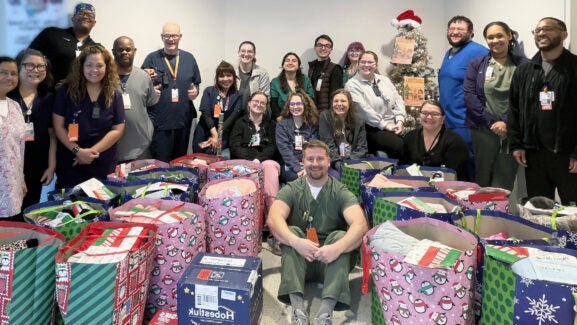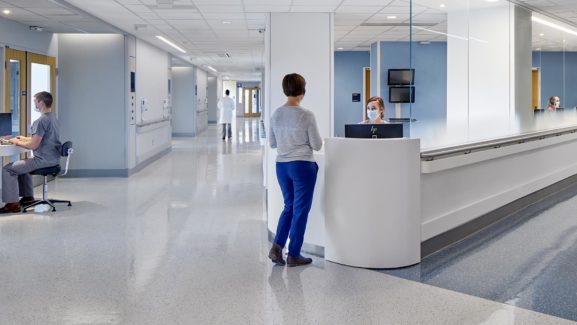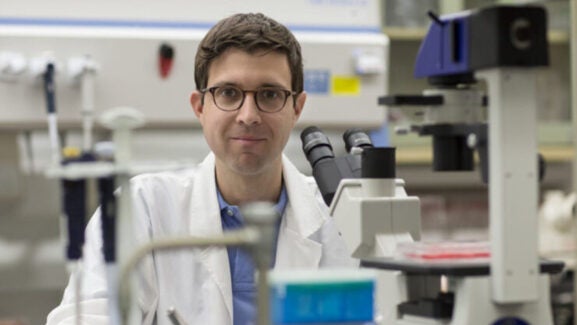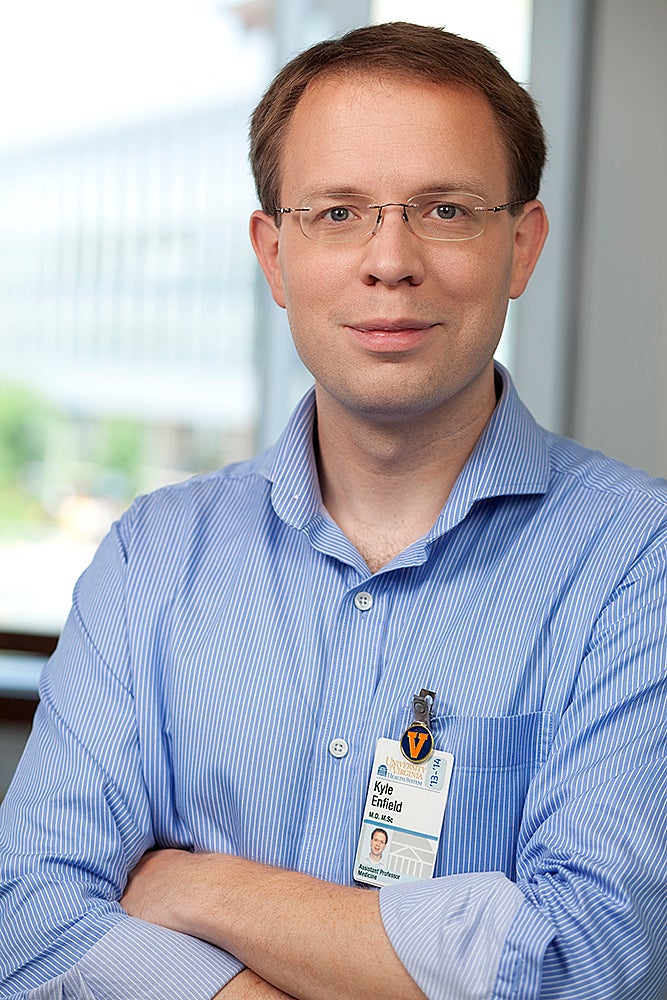
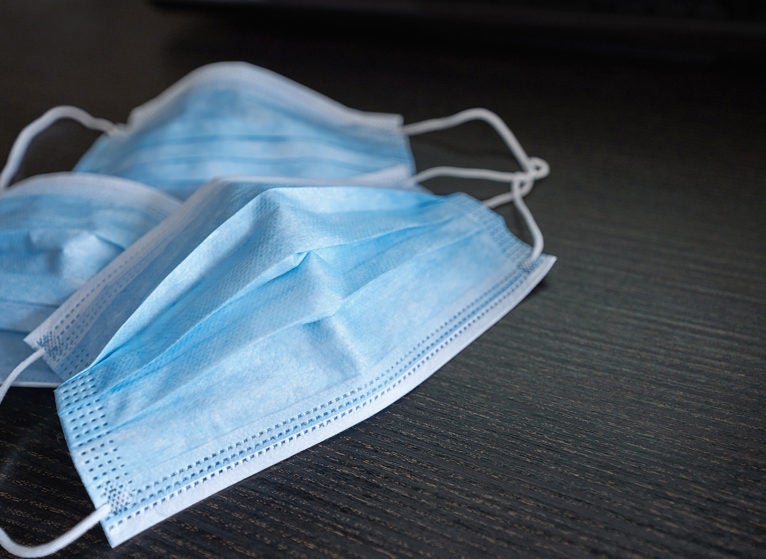
A Year of Challenges and Teamwork: An ICU Doc Discusses Caring for Patients With COVID-19
Although most days of the past year are a mere blur for busy UVA care providers, Kyle Enfield, MD, clearly remembers March 23, 2020. That’s the day the first patient with COVID-19 was admitted to UVA Hospital.
Since that day, Enfield, who serves as Medical Director of the Special Pathogens Unit (SPU) and Section Chief for Critical Care Medicine in the Department of Medicine, has been deeply involved in caring for patients with COVID-19 and in ensuring that our clinical practices evolved as new studies and reports about the treating the virus became available. Following is a summary of his description of what it has been like to work in an ICU during the pandemic.
Q. What has it been like caring for patients with COVID-19?
For many of us, treating the severity of illness seen in patients with COVID-19 is what we trained to do. There are also challenges — like the physical strain of wearing PPE during all of our patient interactions. The need for PPE has made our work harder than usual by placing an additional physical strain on providers. There is emotional strain as well, particularly being with those who are sick and dying when they are away from family. It is hard to juxtapose seeing the impact of this pandemic on patients, your community, and the world while also practicing the skill you are passionate about and utilizing everything you learned.
Q. Has the ICU team felt stretched too thin during the pandemic?
At times yes, we have felt stretched. Everyone has put in more hours than we would have pre-pandemic, and it is taking its toll. When you add in the physical and emotional strain involved in caring for those with COVID-19, there is a real impact. There has been community support, which really helps. From meals to cookies, little things can make a difference when we feel stretched thin. The SPU team has also seen support from across the health system to match staffing to the patient's clinical needs. We see the benefits in patient outcomes when we match patient acuity with staffing.
Q. How do you describe the acuity of patients with COVID-19?
Acuity can be explained as the number of things that patients usually do for themselves that now needs to be done for them. For example, when people cannot breathe for themselves, we provide mechanical ventilators. When their kidneys are not functioning, we use a dialysis machine. At the extreme, they require the use of an Extracorporeal Membrane Oxygenation (ECMO) machine. ECMO removes deoxygenated blood from the body, adds oxygen, and returns it to the patient. Many patients require multiple kinds of support, each adding to their acuity. Having the critical care team to care for the sickest of the sick patients sets UVA apart from other hospitals, and caring for patients with high acuity is what we do best.
Q. How has the care of COVID-19 patients evolved over the past year?
While coronaviruses are not new — this one and its clinical manifestations are. To look back on the ideas suggested early in the pandemic — some of which were an outgrowth of fear — compared to the way we care for patients today, is a roller-coaster. What has driven this transformation is clinical research, which UVA has been a part of, and a recognition that critical care fundamentals are sound. New research is published daily; it can be a bit like drinking from a fire hydrant. You have to stay on top of the publications and separate what adds clinical value from what does not.
Globally, we are all indebted to the patients who participated in clinical trials and the teams that carried out those projects. These trials led to the use of Remdesivir and Monoclonal Antibodies with some patients and of steroids for all that require oxygen, just to name a few. The pace of improved interventions during this pandemic far exceeds the expected rate of innovation. A local example of this is the CIPT trial, which looked at Convalescent Plasma's impact in patients with Severe COVID-19. The UVA team designed, funded, executed, and published it in under a year. This pace is extraordinary and has been typical for clinical trials during the pandemic; however, it is much faster than we normally see.
Q. Has there been an upside?
Yes, we experience a sense of purpose and reward when caring for patients with COVID-19. We do feel that we have a direct impact on fighting this pandemic. We see the positive outcomes for our patients who go home. It is particularly rewarding when we can discharge patients whose survival was in question when they arrived.
Latest News

